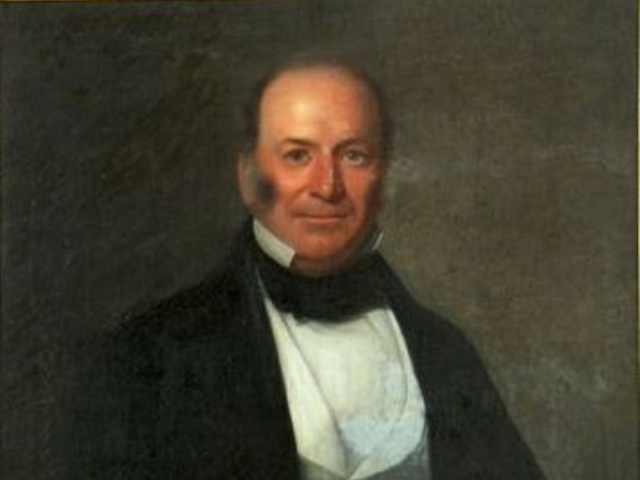
Portrait of Governor James Hopkins Adams of South Carolina, c. 1850. Wikimedia Commons.
(1812-1861) Adams was born in Richland District to Henry Walker Adams and Mary Howell Hart Goodwyn. He attended Minervaville Academy in Richland before being sent to Partridge Military Academy in Middleton, Connecticut, in 1826. Graduating from Yale in 1831, Adams returned to South Carolina and took possession of his sizable inheritance. In1832, he married Jane Margaret Scott and they had nine children.
In 1834 Adams was elected to the S.C. House of Representatives. He served three more terms in the House (1836–1838, 1840–1841, 1848–1849) and two in the S.C. Senate (1850–1851, 1852–1853). On December 11, 1854, the General Assembly elected Adams governor. Adams assumed office during a lull in sectional hostilities. South Carolina repudiated secession during the crisis over the Compromise of 1850. Adams belonged to a faction favoring immediate secession, a move calculated to force southern states to choose between joining South Carolina in creating a southern republic or staying in the Union. Seeking an issue to unify southerners and accelerate the division of North and South, Governor Adams addressed the General Assembly in 1856 and called for the reopening of the international slave trade. By importing more Africans, Adams believed that prices would fall and allow more southerners to buy slaves. As a result, support for slavery would expand by increasing the number of persons with an economic stake in the institution. The movement to reopen the slave trade had some support but was opposed by most southerners as too radical.
In 1860 Adams was a delegate to the Secession Convention, where he advocated immediate secession. After South Carolina seceded on December 20, 1860, Adams was one of three commissioners sent to Washington to negotiate the conveyance of federal property to the state. He later voted against the Confederate Constitution, arguing that it retained the same language as the U.S. Constitution, which made the slave trade illegal and failed to guarantee that all Confederate states would allow slavery within its borders. Despite the protest of Adams and others, the constitution was adopted. Adams died shortly thereafter on July 13, 1861, and was buried in the cemetery of St. John’s Episcopal Church, Congaree.


